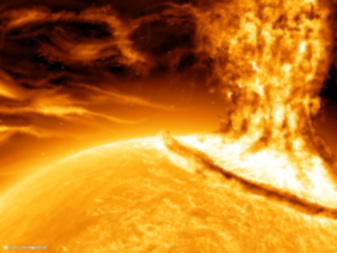Concepts, Methods, and Modern Research in Nuclear Fusion Energy
Zachariah Yarbro
Physics 212
 |
Nuclear Fusion is the process that powers the stars by combining units of Hydrogen into heavier elements and pure energy. Since the discovery
of this process, nuclear researchers have been captivated by the concept of engineering a device that converts the energy from a controlled fusion reaction
to form useful to humans, such as energy to power an electric generator. If a functional Nuclear Fusion power plant is constructed, it would provide
an abundant, even inexhaustible, source of energy to society. Furthermore, the process which powers these plants does not release airborne pollutants
or any long-lasting nuclear waste. Fusion reactors have been in development for nearly a century, and predictions for a functional fusion reactor
have been at around forty years away for almost the entire time. Modern-day predictions for the completion of a controlled fusion reactor are the same. Though
the same prediction has been false in the past, modern research trends suggest that fusion reactors are well underway and will almost certainly be completed
within this century.
The purpose of this website is to present a qualitative, but thorough, conceptual description of the nuclear fusion process with a slightly more detailed outline
of the difficult conditions required for it, several reactor types developed to achieve a maintained fusion reaction, and modern research projects intended
to create a functional nuclear fusion reactor well before the end of this century.